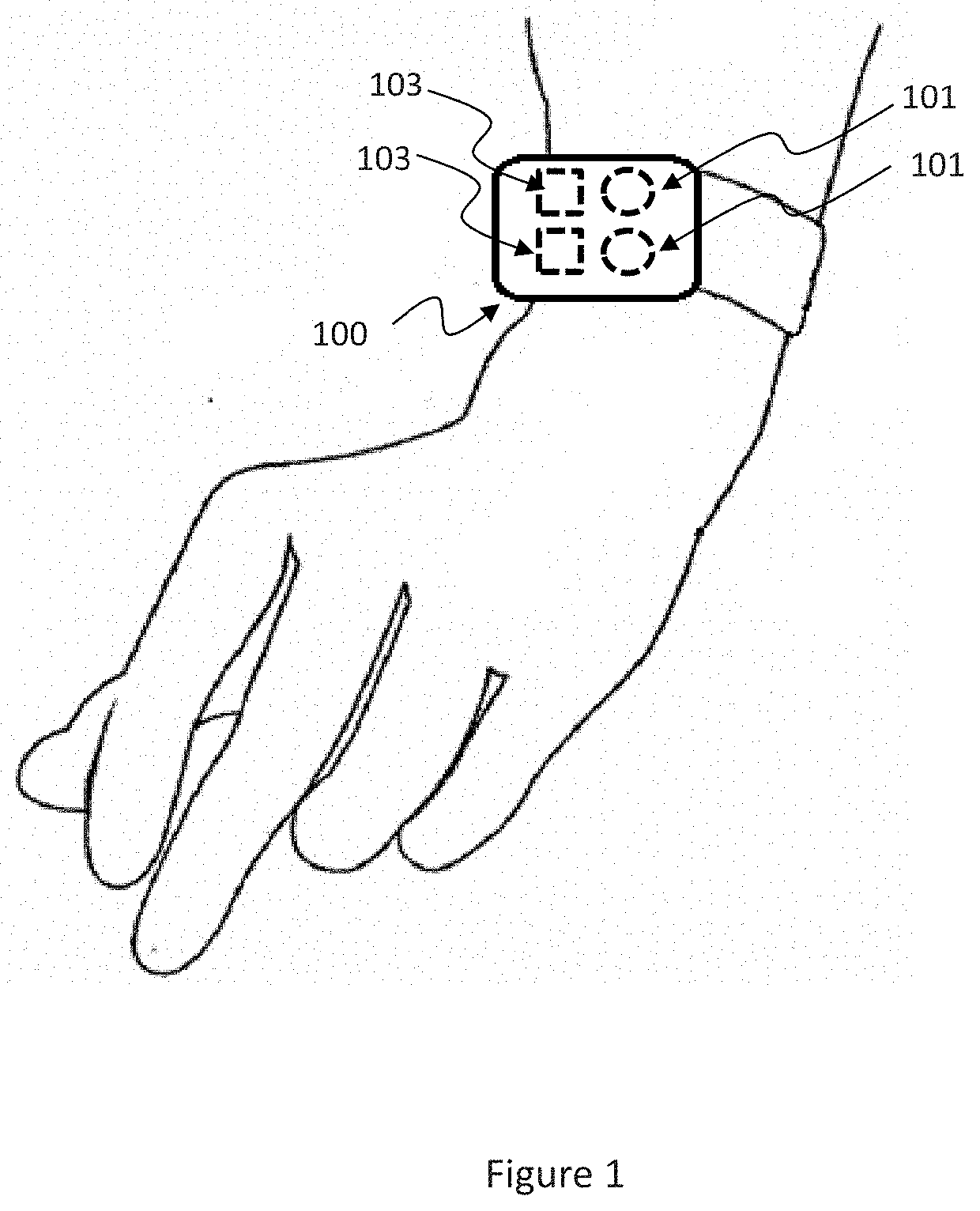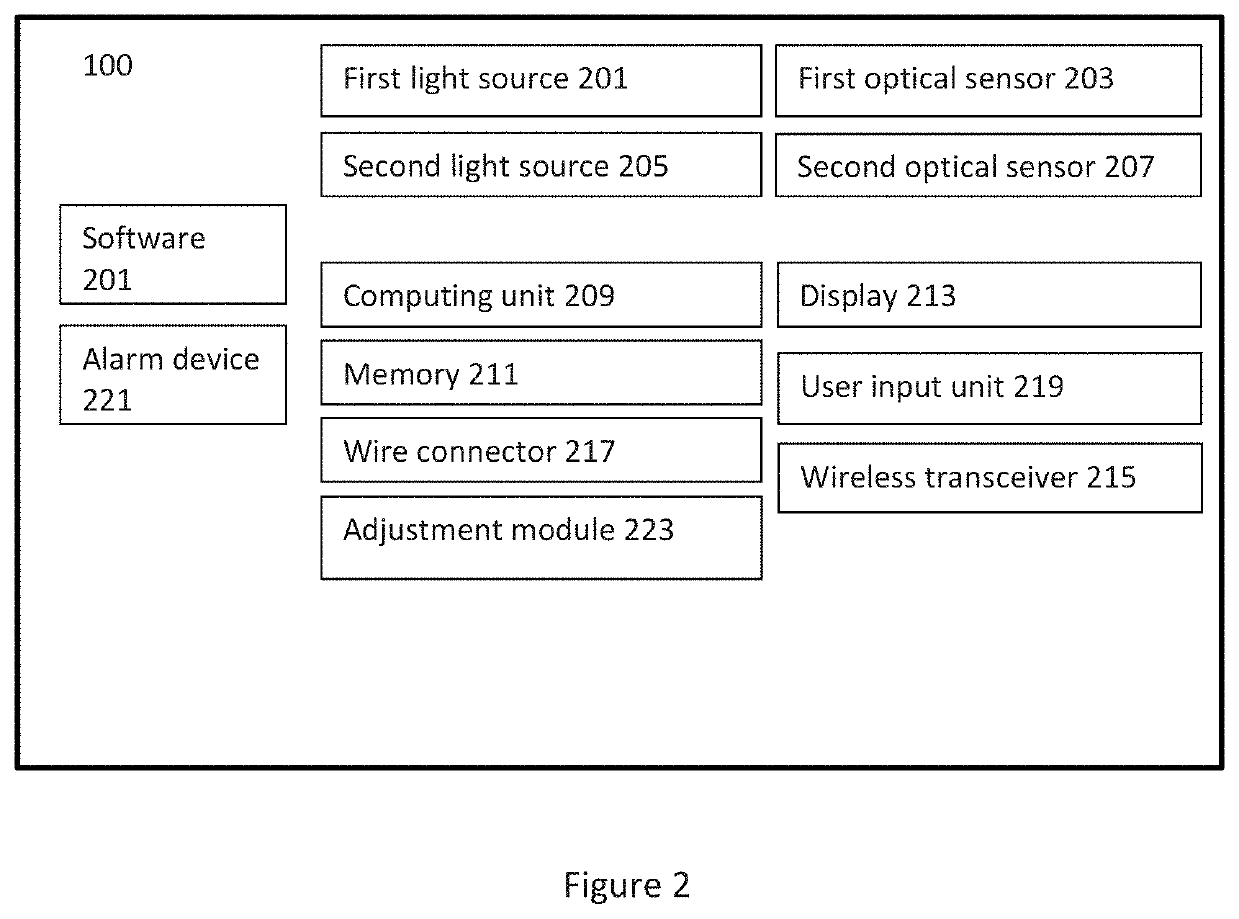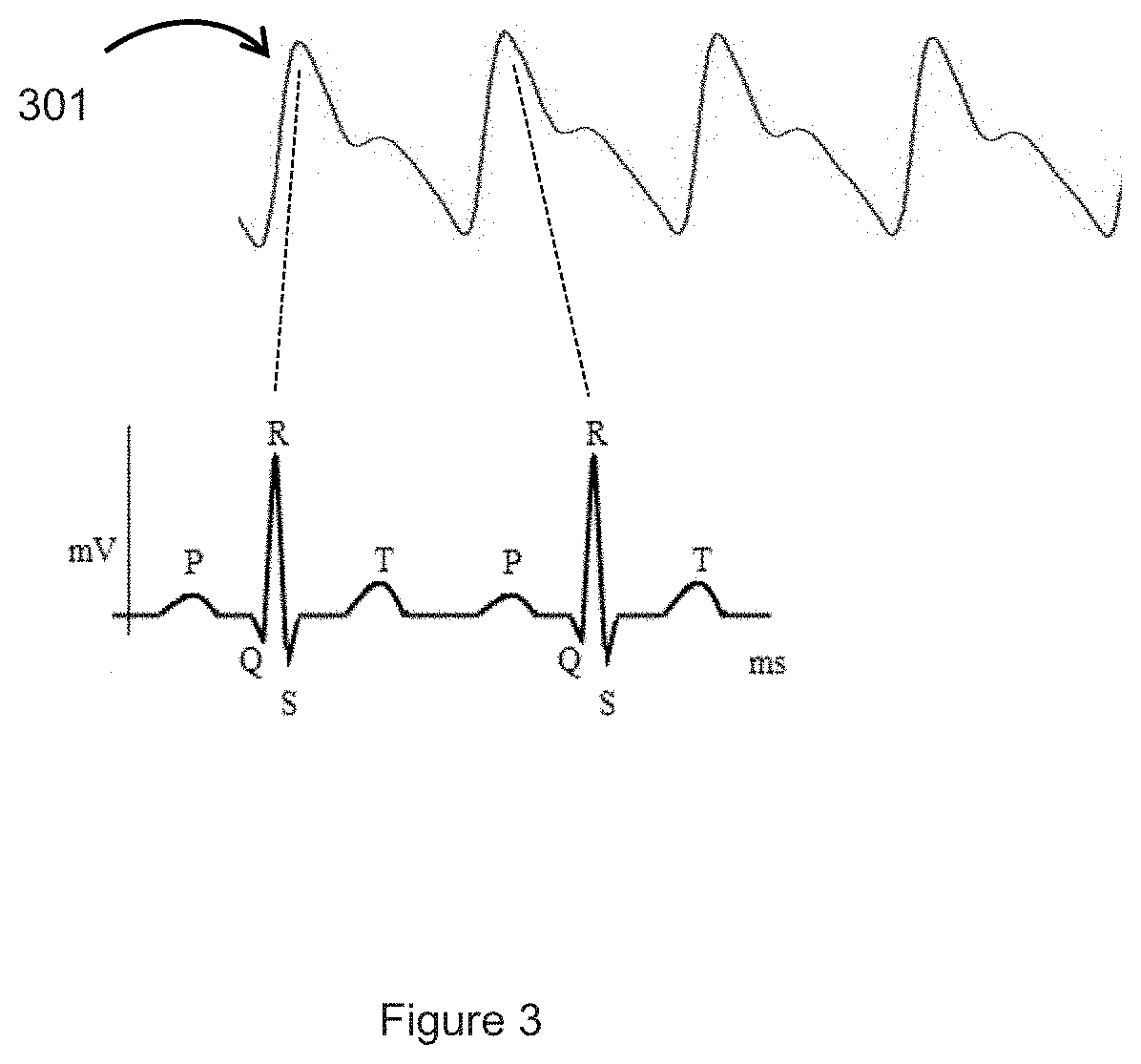A method of selecting the intensity of a light source for monitoring an analyte in blood, and a device thereof
a technology of light source and analyte, which is applied in the direction of measuring/recording heart/pulse rate, medical science, diagnostics, etc., can solve the problems of troublesome daily monitoring of blood glucose levels, inconclusive level of blood glucose, and many people's tormen
- Summary
- Abstract
- Description
- Claims
- Application Information
AI Technical Summary
Benefits of technology
Problems solved by technology
Method used
Image
Examples
Embodiment Construction
[0057]FIG. 1 shows a glycated-haemoglobin monitor 100 shaped like a watch. The glycated haemoglobin (HgbA1c) monitor is worn on one of the wrists of a subject. The underside of the glycated-haemoglobin monitor 100 comprises at least two pairs of photoplethysmocharty (PPG) sensors. The PPG sensors on the underside of the embodiment are placed snugly against the wrist in order to avoid ambient light from affecting the readings of the optical sensors 103.
[0058]Each of the two of PPG sensors comprises a light source 101 and an optical sensor 103. Typically, the light sources 101 are LEDs (light emitting diodes) and the optical sensors 103 are photodiodes. However, the skilled man understands that light sources suitable for irradiating into the subject's tissue besides LEDs may be used. Similarly, other optical detectors besides optical diodes may also be used.
[0059]In FIG. 1, each light source 101 is depicted by a circle. Each optical sensor 103 is placed next to the light source 101 an...
PUM
 Login to View More
Login to View More Abstract
Description
Claims
Application Information
 Login to View More
Login to View More - R&D
- Intellectual Property
- Life Sciences
- Materials
- Tech Scout
- Unparalleled Data Quality
- Higher Quality Content
- 60% Fewer Hallucinations
Browse by: Latest US Patents, China's latest patents, Technical Efficacy Thesaurus, Application Domain, Technology Topic, Popular Technical Reports.
© 2025 PatSnap. All rights reserved.Legal|Privacy policy|Modern Slavery Act Transparency Statement|Sitemap|About US| Contact US: help@patsnap.com



